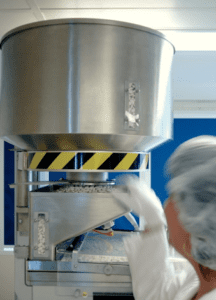Industrial organizations are looking to deploy power, automation and control solutions faster and more efficiently than ever before. The need to stay competitive by lowering costs while increasing production has forced changes in the way the various parts of the plant operation connect and communicate.
Today’s Industrial operations are all about a “wrap and reuse” approach that migrates to new technologies without ripping out the traditional installed base of equipment. Simplicity in integration of new products with existing legacy applications has emerged as a critical success factor for maintaining competitiveness.
That’s why plant technology architectures and the concept of digital augmentation have recently caught the attention of industrial decision-makers. If new products can be pre-designed to fit into an “open” architecture or platform, then this removes much of the cost and uncertainty surrounding hardware and software integration. And, at the same time, new technologies, such as mobile devices and secondary sensors, can “augment” the value of existing machine and equipment infrastructure. This is accomplished by leveraging internet/cloud connectivity and digitization to unlock a deeper and more precise analysis of existing equipment performance.
To realize these benefits, a suitable architecture design that accommodates new, emerging trends such as the Industrial Internet of Things (IIoT) and related “Big Data” management is required. Stakeholders wishing to implement such an architecture should consider the following best practices:
- Identify the layers required to accommodate both legacy and new systems – A comprehensive architecture should address three fundamental layers: a connected products layer that enhances connectivity, an edge control layer that exercises local on-premise control of these products, and an apps, analytics and services layer that applies new analytics and cloud services benefits to both new and existing core applications.
- Ensure end-to-end cybersecurity across all three layers – IIoT technologies that plug into the architecture need to comply with IEC 62443 Industrial Network and System Security cyber security standards. Manufacturers of products need to assure a Secure Development Lifecycle (SDL) for those new products destined to fit into the architecture.
- Embrace an open architecture that unlocks the trapped value in your operations – An “open” architecture derives more value from data. Consider the example of how augmented reality can empower operators (for example a machine operator who points a tablet at an industrial machine and sees, on his tablet, a digital overlay of what is happening inside of that machine). An open architecture permits faster data collection, more precise analysis, and quicker identification of equipment behavioral trends.
- Enable proactive maintenance so that asset uptime is optimized to improve profitability – A well-designed architecture should also enhance asset performance. By building in architectural layers of both connected hardware and software analytics, much more asset performance intelligence can be gathered. Maintenance staffs can avoid performing maintenance too early (fixing a device before it needs fixing) or too late (fixing a system only after costly downtime has occurred), thereby significantly reducing operations costs.
Architectures like Schneider Electric’s IIoT-enabled EcoStruxure™ are designed to provide a framework that allows the promise of IIoT to be realized. To learn more, visit the EcoStruxure website.
